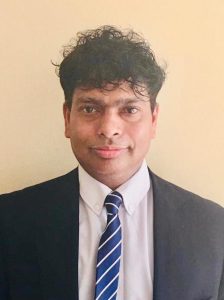Mr Shobhit Verma, Consultant Paediatric Trauma and Orthopaedic Surgeon, offers a unique service at One Hatfield Hospital. He is the only orthopaedic consultant in the area who focuses exclusively on paediatrics, offering babies, children and adolescents highly specialised operative and non-operative management of a wide range of routine and complex conditions. He specialises in a variety of bone, joint, tendon and ligament conditions affecting children of all ages.
You are new to One Hatfield, and we’re delighted to have you on board.
Can you tell us how seeing a paediatric orthopaedic consultant is different to seeing an orthopaedic consultant?
The eyes do not see what the mind does not know. A paediatric orthopaedic consultant has chosen to make the care of children the focus of their medical practice. They undergo extensive training leading to comprehensive experience and skills in the treatment of paediatric orthopaedic conditions. Rather than specialising in one body area, they will be able to treat conditions in the hips, knees, feet and ankles and upper limb. They can recognise rare presentations and are trained in advanced and minimally invasive techniques, ensuring your child’s treatment is safe, effective and efficient.
What are the most common conditions you see in your practice?
The best part of being a paediatric orthopaedic surgeon is that you see such a variety. I see a lot of sports injuries and fractures and I also treat deformities and skeletal dysplasia. Many conditions are specific to children. Here are some of the most common conditions I treat:
Bowlegs and knock-knees
In routine practice, these are considered normal variants and part of the normal development of a child from 0-9 years. We usually plot the angles at the knee on a graph to see whether they are following a normal pattern. An abnormal pattern might represent an underlying disorder and need correction. The good news is that, if required, correction is possible with minimally invasive surgery.
Flat feet
All children are born with flat feet. The arch development starts at 2 years and goes on to develop over the next 7 years. Flat feet come in two varieties, flexible and rigid. It is important to differentiate between the two, as flexible flat feet are not symptomatic and rarely require surgery. Rigid flat feet on the other hand are more likely to need intensive treatment and, in rare instances, surgery.
In-toeing
In-toeing can occur due to an inward twisting along various areas of the leg including the hip, thigh, shin, and foot. Although in-toeing usually resolves as the child ages, it is important to determine the bones responsible to differentiate normal from abnormal. The condition is usually asymptomatic but in rare cases may lead to frequent falls, knee pain and kneecap dislocations and surgical correction may be required.
How can I find out more?
 Mr Shobhit Verma is a Consultant Paediatric Trauma and Orthopaedic Surgeon. He specialises in children and young adult sports injuries, fractures, and conditions affecting children’s lower limbs including hip, knees, foot and ankle. He has a special interest in paediatric and adult limb deformity correction and limb reconstruction.
Mr Shobhit Verma is a Consultant Paediatric Trauma and Orthopaedic Surgeon. He specialises in children and young adult sports injuries, fractures, and conditions affecting children’s lower limbs including hip, knees, foot and ankle. He has a special interest in paediatric and adult limb deformity correction and limb reconstruction.
Read more here.
Mr Verma has regular clinics at One Hatfield Hospital. He will conduct a thorough investigation into your child’s condition and recommend a treatment plan. If you are paying for your own treatment or have insurance you do not need a GP referral.


 One Ashford
One Ashford One Hatfield
One Hatfield